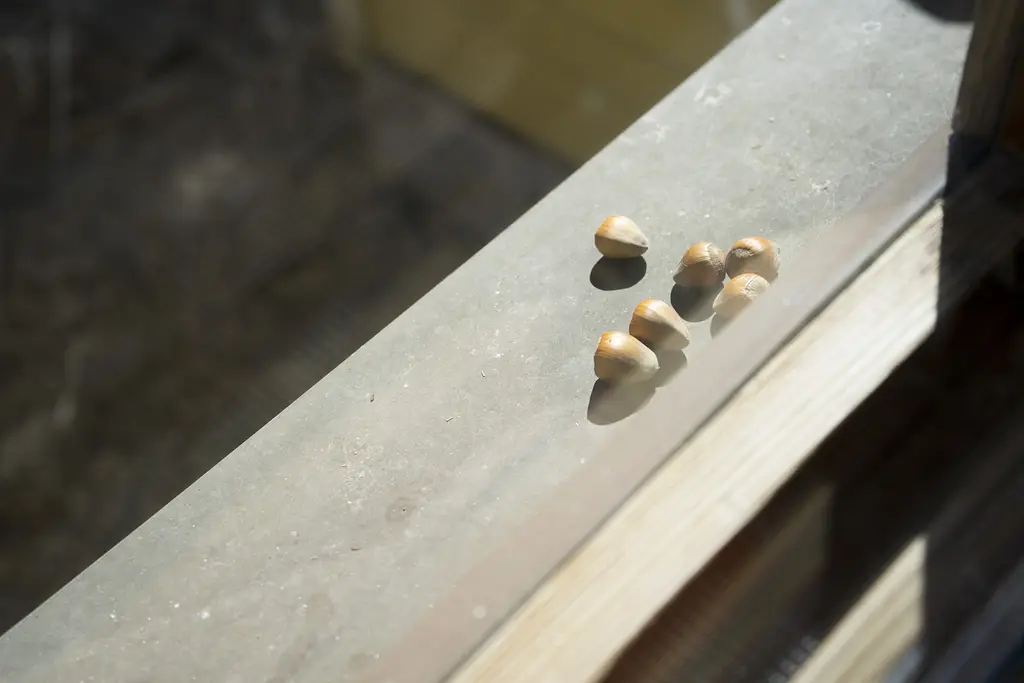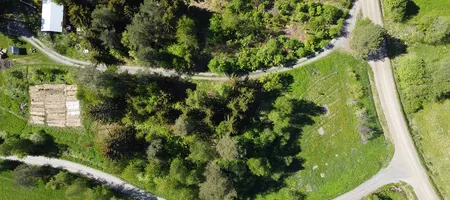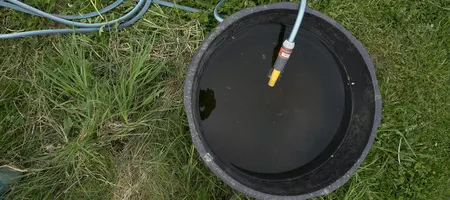Since I wrote about "Continuous Integration" some time has gone by. Good to have you here again. I have evaluated the design before implementation, ran a reiteration twice and then started implementing.
Find the implemented parts from the proposed design (link here) below:
Implemented parts
Menu structure
The main menu now has a menu point "Diploma" that points to /content/dapd. The placement is currently after the blog as the Diploma will also show up in the blog. This now gives readers direct access to the Diploma instead of hiding it within the blog.
Content structure
There was nothing really to do there. Everything was designed beforehand and there weren't any needs to change the content structure and the Paragraphs. I guess that this is more "Continuous Integration"-specific. There will be designs further down the road that need new Paragraphs. Will be awesome to use them. But even further down the road, when we look to the Drupal 7 to 8/9 Upgrade in 2021 there might be quite a nightmare ahead of me. I ran some upgrade tests over the last week and it seems like one of my choices, the module Panelizer, doesn't allow the usage of it on Paragraphs in Drupal 8 (yet), which in the current version I'm extensively doing. So, I'll possibly be lucky and they will offer that ability in the upgrade path later on, or I simply will have to strip the site of that usage and then upgrade. Means I have to create an intermediate step or write an upgrade path on my own. It is basically a minor upgrade hell. But I will get it done. I have reserved a huge amount of time for the redesign and the rewriting of the theme in twig and the upcoming upgrade. If you think about the ability to do all that things what Paragraphs can do you will never want Wordpress, never. Ok, I run far too much advertisement. This is people care. I'm taking care of myself.
Landing page
The landing page is fully integrated but while integrating it I had some further ideas. I went for another iteration of the landing page and will amend my initial design a little, especially the intro text.
Submenu
The submenu is available as list. The header has switched from Submenu to "Diploma Designs". I think that will make sure that everyone understands what it is. As there are not many nodes yet available this will be revisited after the 3rd or 4th design. People care. Spending less time, less resources used, hence Earth care.
Node to Node navigation
The landing page has a submenu, but now also the nodes of the diploma have the submenu. That allows node to node navigation without coming back to the landing page. People care.
Frontapge
The frontage now has a "Diploma Design" block that shows the latest Diploma related article. -> faster access. People care.
Feedback
Cathrine send me feedback about the design and I will describe her suggestions here.
Clarity on the process
Suggestion is to state clearly what process is used in the beginning of the design. I put the used process into the end credits. But I understand that if an assessor doesn't really know what process she is in that it complicates things. I changed the initial article to clearly state what process is used. And besides that all processes will be separately described. Especially if I'm using my own. Clarity will be very helpful during all stages. This is good example of people care. The tutor and the assessor can faster assess my work. If I can cut the time people need to spend on my diploma down I save resources. I care for the earth. It also is easier to understand for the public. Hence fair share.
Clarity about context
I guess each design needs an intro that is the same. Basically something similar to the introduction text at https://www.beyondbuckthorns.com/content/dapd. I will use the following:
"This article is part of Dominiks Design Portfolio for his Diploma in Applied Permaculture Design. Read all articles related to his Diploma at the Diploma landing page." This will help visitors to understand the context the article is in. This is good example of how good webdesign and good content structuring is people care. Less time spend on a website by getting the info needed saves time, server time, which is energy. I cared for the earth. It is easier to understand for the public. Hence fair share.
Accessibility of the content
Cathrine suggestion that it might be useful to have an index of the headings at the beginning of the article. I think this is a good idea, especially if articles become longer. Good example of people care. I could also pin this on earth care. But if you follow me down in that rabbit whole you might never come back. Ok. An index is an internal link structure that basically provides internal linking. Something search engines love. In SEO we have a saying: Content is king. The better your content and your semantical structure the better your ranking can be. If you are higher up in the ranking and your content, which in my case is about the Diploma in applied Permaculture design, is more relevant you save people form searching for a long time. You care for the earth by making sure that content is relevant and energy is not spent on waste. A bad example is resurrecting an old page for the sake of having the content back. This happend at the EuPN when the Permateacher.eu website was resurrected. The content on that website is outdated but it ranks high because there are not many resources for around for the terms "Permaculture teaching". But as the content is outdated it is a waste of time. It doesn't really care for the planet. It doesn't really care of the earth. And the fair share is pretty questionable.
Clarity about the ethics and principles
Currently I don't describe the usage of the principles and how my design fulfills the ethics enough. I already tried here, in the feedback section, to show how different parts of the feedback are related to the ethics.
Reflection
I'm pretty happy with it. Especially as it is a least effort maximum effect design. I haven't had a lot to do - other than thinking, ok and documenting / writing. There are some small problems with the actual content structure. Using the same tagging field that is also used for other content had me change the taxonomy term views a little. Ok, forget, pretty detailed. One of my thoughts, and that is probably another iteration of the design: How does someone who is within a specific Diploma node navigate to the other Diploma designs? Something I haven't thought of before the design. But as it was easy to do I implemented it. I also changed the frontpage. On the frontpage we now have a block that directly links to the latest Diploma related article. It showed me that even if you think about all the aspects of a website and use Permaculture principles and a design process you still might miss something. It is probably easier on a website than on land based site. Software is after all pretty forgiving.
I'm not so happy, May 30th 2019, about how the initial idea of getting feedback from the public worked. None of my friends, even those deep down in Permaculture, were interested in my design. The only feedback I received was that from my tutor, which I was happy about. I find it rather depressing that even the colleagues at the Finnish Permaculture Association didn't comment. I also didn't get any "likes" sharing it on Facebook. Neither at my private page nor on the Beyondbuckthorns FB page. Every stupid photo of me gets more likes.
The Why
Most Diplomas are written backwards. They are a reflection of what has happend prior to writing. And even if they are written while happening (ok, we know that we can't do to things at the same time, so we think of it as being done immediately consecutively) they are released to the public usually shortly prior to presentation - at the very end of the process. Diplomas are currently handled like Bachelor or Master or even PhD thesis. They are kept as a secret only known to some close friends and after years of work they get released. Thereby feedback loops are limited to the tutor, friends and the diploma guild. That will limit the amount of people that exchange knowledge and info about designs and Permaculture drastically. Basically the entire acquired knowledge is kept behind closed doors for years. The current methodology contradicts the "each important function is supported by many elements" principle. The current process also drastically limits edge effects. The number of edges raises significantly with the amount of people involved. And that also makes sure that there are far more elements included.
Another, yet for me important point, is the state of mind. The author, if writing about it after implementation, is in a total different state of mind than while designing and implementing. Looking backwards on things usually let's us not have that clear picture that we had during the process. It is usually more romantic, drastic and more or less precise. While looking back and reflecting is helpful for the future projects but it is not helpful for documentation purposes. Documentation should be done during, not after.
In the techy web developer world continuous integration means that features are added on the fly. The product has been rolled out but still features are added. In lean production products are usually called the MVP, the Minimum Viable Product. This is a product that is good to show to where the process is heading to but probably not fully feature rich. It is something that helps clients to understand and see progress. It helps find failures during the early stage. It helps to remove blockages before they become bottlenecks that are then difficult to resolve. The basic concept is to take the idea of continuous integration and apply it to the Diploma process.
Instead of writing about a certain design or compiling a PDF at the very end of a process I will continuously write about it on the web. The proposed process of splitting up the design into two parts gives everyone the possibility to get right into the design process. And this is what we writer work for: the public. Each and everyone. And: I write it forward. Continuous integration was necessary in order to make Beyondbuckthorns fit to house the Diploma. You are still writing your diploma secretly in your chamber? How antiquated!
End credits
- I used the following tools:
- Wiki
- Mind Map
- Sector and Zone Analysis
- Process: Obr3dim
- Time consumed
- Writing: 6 hours
- Design process: 2-4 hours
- Implementation: 1-2 hour
- Reflection & Feedback: 3-4 hours
- Thanks to Lumia for constant help and proofreading
- Thanks to Cathrine for feedback and mentoring
The next design is part of the Toolbox. Clarifying the process used will help - a lot. Get ready for some Awesomsauce and process tweaking. It's time for the allmighty Obr3dim to enter the stage.








